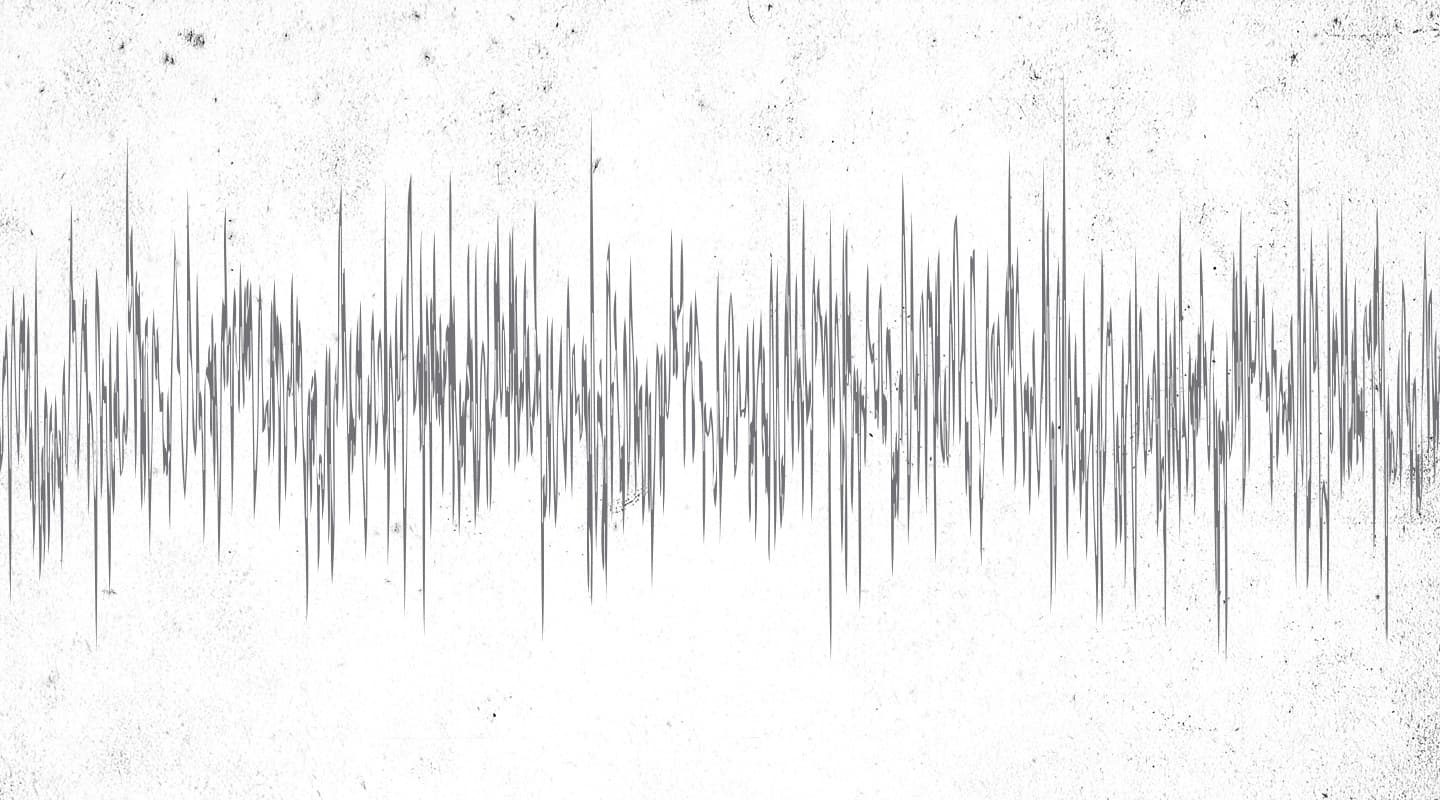
On The Bench: What’s That Noise
Is that sound you’re hearing ‘buzz’, ‘hiss’ or ‘crackle’? Let’s find out.
Text: Rob Squire
As I sit on a flight, returning to The Bench after a week’s solder-free holiday, this issue’s topic – discussing noise in all its annoying guises – weighs heavily upon my ears. Only when we can travel in silent aircraft that circulate lots of fresh air, and can provide scattered beanbags on the floor for seats, will enjoyable long-distance travel finally be said to have arrived. In the meantime we have to put up with the shortcomings of commercial air travel to reach our destination, just as noise is an inescapable yet undesirable part of our audio systems. This issue, let’s examine the different types of noise, their origins and characteristics, and – where we can – ways to minimise the impact of noise on audio quality. For the purposes of this article I’ll be casting a wide net around noise, and defining it as ‘any undesired or unintended artefact of an audio system’.
HISS-Y FIT
The most common noise – and indeed the sound we generally associate with the term ‘noise’ – is hiss, sometimes called white noise. White noise has a constant spectral density, meaning that the level of noise at any one frequency is the same as at any other. This noise is caused by the random motion of electrons in a conductor and is technically referred to as thermal or Johnson noise. The voltage level of this noise is directly related to the resistance and temperature of the conductor. It can only be reduced by lowering the temperature – as is done in the detectors and electronics of large telescopes, which are often cooled to within spitting distance of 0ºK or –273ºC – temperatures not easily achieved in the studio! I know studios can be ‘cool’ at times, but not that cool!
Taking the typical minimum possible noise from a microphone (see the Noise Calculations box item for details) and applying 60dB of gain to bring it up to a useable line level, will yield a noise floor of –73dBu, still very low. What it shows, however, is that even in a ‘perfect’ system there will always be some degree of noise. Real-world electronics, including resistors, contribute other noise sources besides thermal noise. For example, as soon as current flows through any electronic part, a particular type of noise is created called ‘shot noise’; the level of this noise being proportional to the current flowing. This is the dominant noise mechanism in transistors (anything built using transistors including integrated circuit opamps). Shot noise is also a white noise. Both of these noise mechanisms are fundamental as gravity, and anyone who designs electronic equipment is obliged to optimise their design by minimising circuit resistances to reduce thermal noise, and circuit currents to reduce shot noise.
As is often the case in any of life’s trade-offs, compromise is usually required to achieve the functional objective of the electronic device while at the same time minimising its inherent noise floor. One area where designers do have greater choice, however, is in the actual selection of the parts they use. Manufacturing irregularities or material impurities involved in the construction of solid-state devices – or indeed tubes – introduce a noise mechanism called ‘I/f’, or flicker noise that, unlike white noise, has a spectral output that increases as the frequency decreases. This is sometimes referred to as ‘pink noise’, which has an equal-energy-per-octave spectrum. Pink noise is typically what’s used for tuning PA systems as its equal energy per-octave matches the octave-based centring of graphic equaliser controls.
Audio components specified for low-noise performance minimise internal resistances for lower thermal noise, and typically use high-grade materials and superior manufacturing processes for low flicker noise. Good audio design thus balances the contribution of all the various noise sources to achieve not only the lowest noise possible but also the final spectral content that results from summing these noise sources together.
Certainly one of the most common complaints that customers report to me when shipping me something for repair is that the device in question is ‘noisy’. Unfortunately, the term ‘noise’ – at least from an audio tech’s point of view – is somewhat frustratingly bandied about as a one-size-fits-all description for all sorts of unwanted sounds. My first response to anyone using this term is typically: “what sort of noise?” The reason being that the type of noise a device is producing can tell a service technician a lot about the likely source of the fault. Becoming familiar with specific types of noise – rather than merely describing something as being ‘noisy’ – will allow you to get off to a good start with the service technician should you have a faulty unit that requires their help. Being able to describe the fault to them as a ‘a hum’ or ‘a buzz’, ‘hisses’ or ‘crackles’ rather than just saying ‘it’s noisy’ will definitely get you well on the road to solving the problem.


HO-HUM
‘Hum’ is the bane of many a studio setup and, in the case of a new studio, is often the result of ground loops – as discussed back in Issue 64 where we looked at studio wiring. However, sometimes hum is a problem that has nothing to do with external wiring or ‘grounding’.
Anywhere that current flows, magnetic fields are created. If that current is alternating, as is the case with mains power, then a 50Hz (in Australia) or 60Hz (in the USA) field is generated. This field can induce a corresponding voltage in any electronic component that falls within that field. Mains power transformers generate quite strong fields, and generally the larger the transformer the greater the current flow and therefore field strength. Unfortunately, some parts used in audio devices pick up this field more efficiently than others. An extreme example that demonstrates this effect is the single-coil guitar pickup: take your Fender Strat and lay it down on the head of a Marshall stack. With a bit of gain dialled up on the amp the hum coming out of the speakers should be more than obvious.
Guitar pickups, inductors and audio transformers – which all contain coils of wire – are excellent ‘receivers’ of magnetic fields. Since mains power is a sine wave, the resulting hum from the Marshall will sound like a pure 50Hz note, just below G1.
Most audio equipment contains a mains transformer and considerable design effort is often required to ensure radiated hum doesn’t find its way into a device’s audio circuits. This is especially the case if the device uses audio transformers, inductors, physically large capacitors, or where high gain is employed, as in a mic preamp. Of course, the situation can – and does – arise where the mains transformer of one unit radiates into the sensitive components of an adjacent unit in the rack. There are a few ways to resolve this situation, the most obvious of them simply being to physically rearrange the position of the equipment – up and down and at different angles. Frustratingly, this is often the least practical method for studios since fixed 19-inch rack units make positioning things at odd angles all but impossible [See the Leave it There! box item about John Nowland of Broken Arrow Ranch, who positions his equipment to minimise noise first and foremost].
Returning to the demonstration with the guitar and amp head for a moment, the other thing that quickly becomes apparent is how much the hum level can drop by simply moving the guitar relatively small distances. Magnetic field strength decreases with the square of the distance so doubling the distance between the generator (mains transformer) and receiver (guitar pickup) will drop the hum level fourfold. Another not uncommon way hum is induced in a system is when devices with large mains transformers – i.e. power supplies or power amplifiers – are placed underneath a console. Most consoles have unbalanced summing buses that are not only unshielded, they span the width of the console and have high gain applied to them in the mix amplifiers – a perfect recipe for picking up radiated hum from equipment placed directly under the console.
NOISE CALCULATIONS
Mathematically, the noise voltage expressed in decibels for a given bandwidth, is:

Here, ‘kb’ represents ‘Boltzmann’s Constant’, ‘T’ is absolute temperature (in degrees Kelvin), ‘R’ is resistance and ‘B’ is the bandwidth under consideration. For most audio purposes a bandwidth from 20Hz to 20,000Hz is specified. Plugging in some real-world values, the noise level that comes out of a microphone with a 200Ω output resistance at room temperature is –133dBu. This is pretty darn quiet, but keep in mind this is noise inescapably produced by a perfect resistance in the output circuit of the microphone. If the microphone is a dynamic then this will essentially be the only source of noise; if it’s a condenser there will be other noise sources from the active electronics in the mic, whether tube or solid-state. We can also see that low-impedance or low-resistance devices and circuits result in lower noise. The state of the art in microphone preamp design can yield a design that only adds a couple of dB of additional noise to the inescapable noise generated simply by the resistance in the output of the microphone.
ALL THE BUZZ
Buzz – as characterised by a low-frequency sound with many higher-order harmonics that make it far more perceptible – is generally the result of a failure in the power supply section of a device. Analogue or linear power supplies create a sawtooth-shaped waveform, which is regulated to produce a clean DC voltage for suppling power to the audio electronics. If this regulator fails the raw sawtooth waveform quickly makes its way into the audio circuits and finally the output of the device. This is a far more objectionable noise than hum or hiss, and typically the offending unit is soon pulled out of any audio system. In some cases where the designer hasn’t allowed for the widely varying Australian mains power voltage, a device can often ‘drop out of regulation’ if the mains voltage gets low enough. This results in a buzz that can be frustratingly intermittent; coming and going as the mains voltage varies at the power pole.
Another noise source that’s often described as a ‘buzz’ is interference from light dimmers and other mains power control systems. The switching supplies used in some fluorescent lights, computer power supplies and dimmers can often feed significant levels of higher-frequency garbage onto the power cables. If these run in proximity to audio cables the noise can be easily picked up. To prevent this, it’s always a good idea to keep some spacing between audio and power cables and to definitely avoid running them alongside each other for long distances. Instead, try to ensure that audio and power cable cross each other at right angles.
LEAVE IT THERE!
Neil Young’s ‘transfer master’ and recording engineer, John Nowland, uses the ‘put equipment where it makes the least noise’ principle like virtually no other. At Broken Arrow Ranch, Neil Young’s private studio in California, John has achieved what he describes “the quietest two-track transfer facility in the world.” One of the main ways he has achieved this is to place equipment housed in the Redwood Digital ‘truck’ wherever it produces the least noise. So, rather than things being placed neatly in racks, some of the equipment at Redwood Digital is freestanding on the bench and at an odd angle, with the high-spec’d cables flown precariously between devices during actual transfers. It doesn’t look all that flash but the end-game – an extraordinarily low noise floor – is impressive. When Andy Stewart visited Broken Arrow a few years back, John apparently turned the system up full throttle, and even then barely the faintest noise could be detected, John quickly adding that, “If I hit play on the tape machine right now the volume would be so loud it would probably pin the speaker drivers to the wall behind you!”
Sometimes ‘neat and tidy’ doesn’t equate to ‘quiet’.
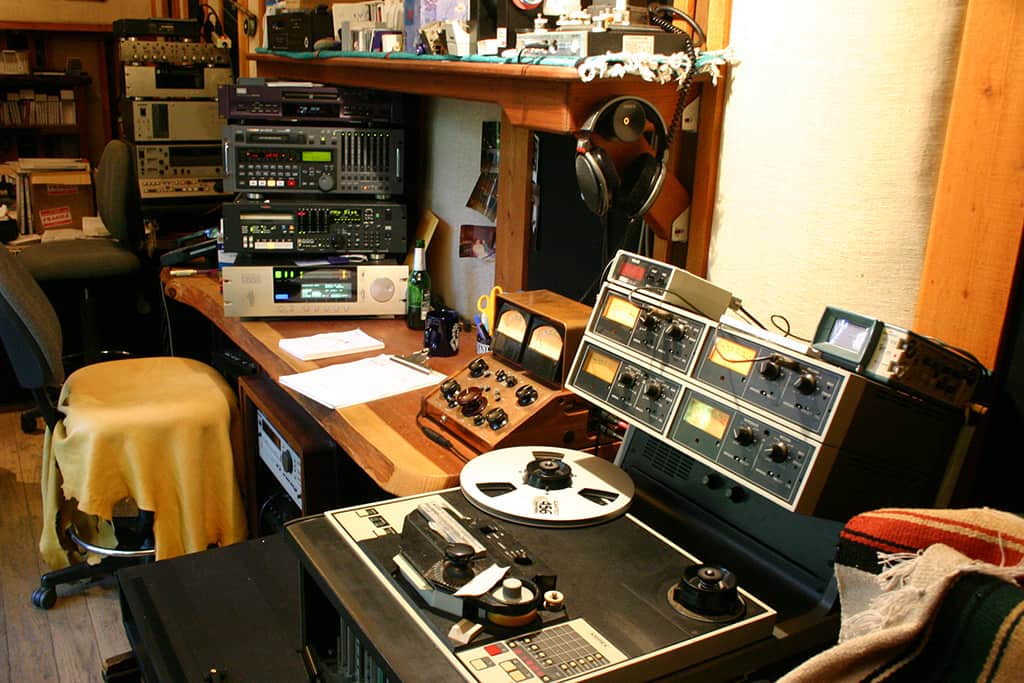
RUMBLE IN THE CAPSULE
Inside my workshop I have a small acoustic isolation box that I use to entomb mics while I’m trying to ascertain their noise floor. While this setup is more than effective at screening out the fan noise from the office PC and the birds in the gum tree outside the workshop window, the isolation isn’t sufficient to block low-frequency noise. It amazes me how readily most mics sitting inside this isolation box still manage to pick up rumble from traffic on the main road several blocks away. Having performed this test countless times, I can easily imagine the amount of very low-frequency noise that can build up in a multitrack recording done in most inner city studios. While the perception of this noise is weak because of the very low frequencies involved, cleaning up recordings with the careful use of high-pass filtering is a worthwhile process by removing this unwanted rumble. At the same time lowering the level of the flicker noise from mics and preamps, as we learnt earlier, increases in level as frequencies go lower.
MICROPHONIC TUBES
Tube-based equipment seems to be having some sort of sustained renaissance, and is increasingly finding its way into studios – of course other engineers never turned their backs on it to begin with. One characteristic of tubes is how much they can react when tapped, a bit like a spring reverb. But what’s not so obvious is the way they respond when exposed to loud acoustic sounds within their immediate surroundings. While electric guitar players are often experienced at knowing what happens when a tube becomes microphonic – when an amp starts singing and feeding back all on its own – a studio operator is often quite surprised to discover how much tubes can pick up acoustic sounds, amplifying and resonating with them in sympathy. It can be a life’s work finding a set of very low microphonic tubes – just ask Rick O’Neil – nevertheless if you start noticing a weird ringing or distortion, check that you haven’t just positioned your new tube preamp right under the main monitors. Loud sound and tubes only play together nicely when you’re pulling a screaming guitar solo!
As a teenager I’d spend hours sitting in front of the family’s old gramophone (yes it had tubes) playing Led Zeppelin records. My dad would walk in yelling: “what the hell is that noise?” I wish I’d known enough back then to say – as I lifted the needle off the record – “I think that’s shot noise in the first preamp tube!”



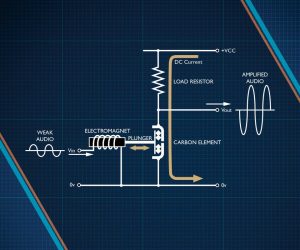


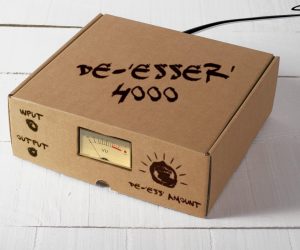

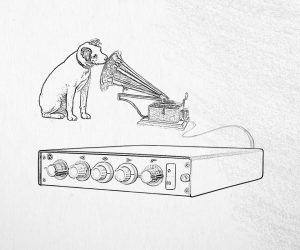


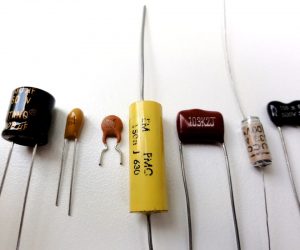
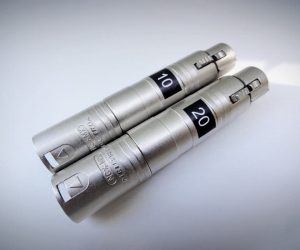




RESPONSES